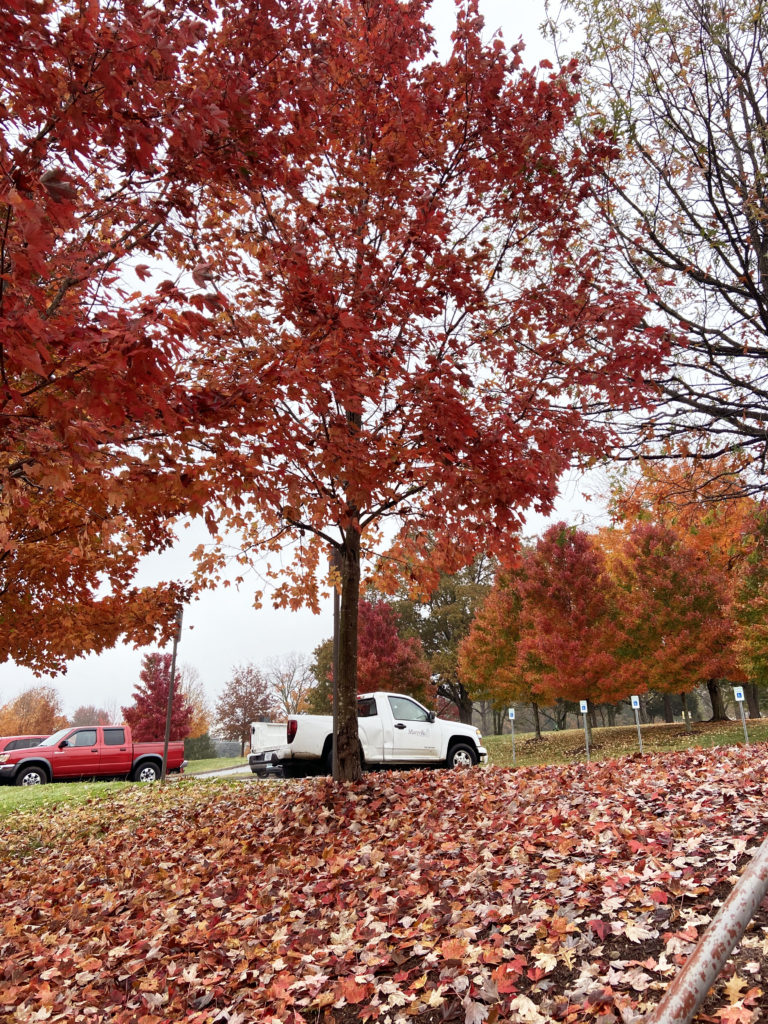You should hang out with trees!
Studies have shown that spending time with trees (if you want to sound more official, call it Shinrin-Yoku, a practice also known as “forest bathing”) can have positive psychological and physiological effects. As students, many of us are bombarded with things that consume our time and force our attention on deadlines that exist somewhere in the future, and respites may be few and far between. And, of course, there’s that pandemic that puts well-being at the forefront of everybody’s minds.
Senior biology major Claire Willenbrink expands on how beneficial spending prolonged periods of time with trees outside can be for your physical health.
“Trees give off chemicals called phytoncides,” Willenbrink said. “When we breath these chemicals in, they help increase natural killer cell activity; these are cells that attack harmful bacteria and rogue cells that could lead to sickness.”
Luckily, we’re always surrounded by these tall friends, and autumn is a beautiful time to get to know them. The transition into autumn in East Tenn. is a time of subtle changes; you never know if you’ll be warmed by the sun, cooled by the breeze, or if the day will be overcast and rainy. The emerging of vibrantly colored leaves that sway and fall off the branches of trees are a classic sign that fall is here.
A more unique sign of fall on Maryville College campus is when the ginkgo tree outside of Davis Hall starts to drop berries that exude a potent smell. Since the tree is right next to a sidewalk, the berries get stuck to shoes and cause a rerouting of foot traffic.

Photo by Sarah Cardall.
“During my plant diversity class with Dr. Threadgill in the spring, we learned that you could always identify a female ginkgo tree by smelling the ground around it,” Willenbrink said. “The stinky seeds are supposed to attract an insect that could help pollinate it, but that insect is extinct now. The trees don’t know that though!”
There’s a male ginkgo tree on campus in between Fayerweather and Bartlett Hall, and that’s what triggers the female ginkgo by Davis to produce its berries.
“So, it’s a tree love story,” said junior sociology major Hailey Carmichael. “That’s what’s happening there.”
Not all trees have such distinctive characteristics like the smell of a ginkgo tree. One of the most common ways to identify trees is by looking at their leaves; with a little background knowledge and willingness to set aside some time, identifying tree leaves can be a welcome respite for anyone.
A fun tree to look for is the sassafras, which is native to East Tenn. These trees have four different kinds of leaves: a left and right-handed “mitten,” a three-lobed “paw,” and a simple rounded shape that comes to a point. The leaves turn yellow, red, and deep purple in the fall. This tree has a pleasant smell, and its roots can even be dug up to make tea that tastes like black licorice.

Photo by Sarah Cardall.
Tulip poplars are another staple to look out for. They are straight, tall trees that can grow up to 150 feet when growing in forests and have striking yellow leaves in the fall. If you’ve walked around in the College Woods, you may have noticed a few of these.
“I love to walk in the woods,” said senior history major Elea Forester. “I go around three times a week, and my favorite thing to see is the sunlight shining through the colors of the leaves.”
There is something special about spending time with trees; something about their longevity, their endurance, can help you feel more grounded.

